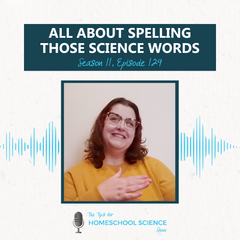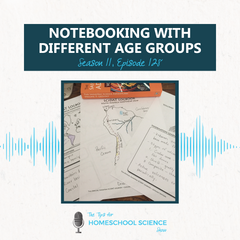FREE Shipping on all our products! (Please Note: Orders may experience a delay of a week or more in shipping due to the high volume of orders at this time of year.)
FREE Shipping on all our products! (Please Note: Orders may experience a delay of a week or more in shipping due to the high volume of orders at this time of year.)
Wrapping up your science fair project – Science Fair Session, part 3 {Episode 49}
May 28, 2018 2 min read

Wrapping up your science fair project – Science Fair Session, part 3 {Episode 49}
You are in the home stretch! All that is left in your science fair project is to analyze your results and share what you have learned with others. So, today we are going to join the final part of the science fair project where we discuss the last three steps and a bit about ethics.
Hi, I’m Paige Hudson and you are listening to the Tips for Homeschool Science Show where we are breaking down the lofty concepts of science into building blocks you can use in your homeschool!
Listen to this episode
Share the Tips
If you found these homeschool science tips to be helpful, would you please take a moment to rate it on iTunes or Stitcher? This would help me tremendously in getting the word out so that more earbuds are filled with science-teaching encouragement.
Highlights

The sixth step of the science fair project is to analyze the data. Your students need to:
- Review and organize the data.
- State the answer.
- Draw several conclusions.
The seventh step of the science fair project is to create a board. Your students need to:
- Plan out the board.
- Prepare the information.
- Put the board together.
The eighth step of the science fair project is to give the presentation. Your students need to:
- Prepare the presentation.
- Practice the presentation.
- Share the presentation.
You need a supervising scientist if:
- You are using humans or animals in your tests.
- You are using hazardous chemicals or controlled substances.
Takeaway Tidbits
You can give your science fair project presentation to family, friends, or to an audience of stuffed animals! (Pin this Tidbit)
The purpose of the presentation is for your students to share what they have learned with others. (Pin this Tidbit)
Ethics in a nutshell ->Don’t cause any harm! (Pin this Tidbit)
Additional Resources
See the full conference session - Eliminate your fears and doubts surrounding a science fair project.
Check out the following articles for more tips to help with your science fair project:
- Theory vs. Fact
- How to plan a homeschool science fair
- 3 Easy steps for writing a science fair abstract
Or get the full book - The Science Fair Project: A Step-by-Step Guide.
Also in {Podcast} The Tips for Homeschool Science Show
All About Spelling Those Science Words {Season 11, Episode 129}
March 25, 2024 7 min read

In this episode, we'll be interviewing Robin Williams from All About Spelling. Click "Read More" to listen is as we discuss tips and tricks for spelling all those science words!
How should you handle notebooking through the different ages? {Season 11, Episode 128}
March 18, 2024 3 min read

Writing in Science with a Well-Trained Mind (Interview) {Season 11, Episode 127}
March 11, 2024 16 min read

Click "Read More" to listen in as Susan Wise Bauer and Susanna Jarret join Paige to share tips and tools about the third key to teaching science!
Subscribe
Sign up to get the latest on sales, new releases and more …

